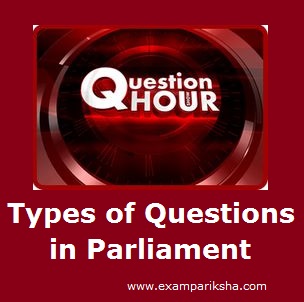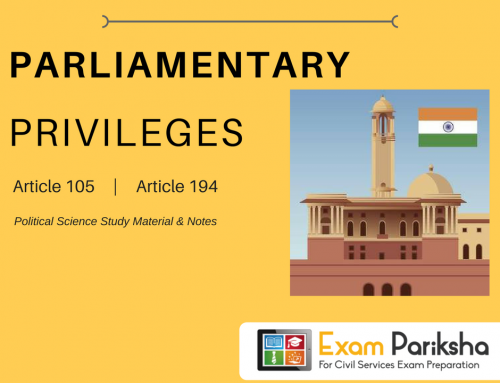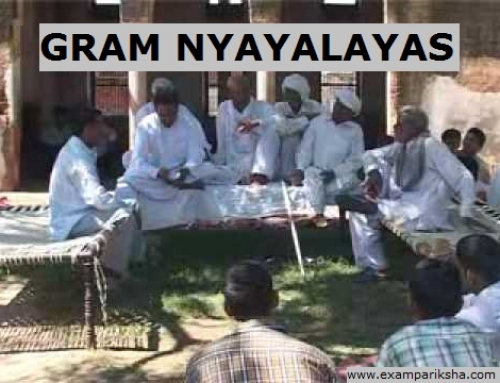In our democracy, asking questions is an inherent and unrestrained parliamentary right of the members.
A Question is one of the devices that is available to a Member of Parliament to seek information on matters of public importance. The questions are usually targeted on concerning subjects detail sought from the Ministries and Departments and to also force on the omissions and commissions of the government.
Parliament has a mechanism dedicated to questions, the Question Hour in which the members of parliament can ask questions on every aspect of administration and governmental activity. Government policies pertaining to national and international spheres come into sharp focus in parliament during the Question Hour.
Question Hour in Parliament
The first hour of every sitting in both the houses of Parliament is devoted to asking and answering of questions, hence, known as the Question Hour. During this hour, the members can raise questions about any aspect of administrative activity. This type of process where elected representatives ask questions which are replied by the concerned minister or the Prime Minister, is part of parliamentary tradition in many other countries. The questions are of mainly three types; Starred questions, unstarred questions, and short notice questions.
There are four types of Questions in Parliament:
- Starred Questions: A Starred Question is the one to which a member desires an oral answer in the house , having a distinguishing mark of an asterisk. When a question is answered orally, Members of Parliament have the option to raise the Supplementary Questions based on the replies to the starred questions. Per day, only 20 questions can be listed for oral answer. Starred Questions require a notice period of minimum 10 days and a maximum of 21 days and are asked during the Question Hour on the fixed days allotted to that Ministry or Department. Note here that, Started Questions from Lok Sabha are printed on a green paper and those of Rajya Sabha are printed on a pink paper.
- Unstarred Questions: An Unstarred Question is the one which does not called for an oral answer in the house and hence, on which no supplementary questions can be asked. To an unstarred question, a written answer is mandated to be laid on the Table after the Question Hour by the concerned Minister. This answer is is printed in the official report of the sitting of that House. Per day, only 230 Unstarred questions can be listed for written answer. But, in addition to this, 25 more questions can be included in the Unstarred Question List relating to the States under Presidential Rule. Therefore, a total 255 Unstarred Questions for a day may be asked, in a relaxation of normal limit of 230 questions. As is evident, unstarred questions do not carry asterisk mark. The notice period for unstarred questions is same as that for the started Questions (minimum 10 days and maximum 21 days) and these questions are also asked on the allotted days for the concerned Department or Ministry during the Question Hour. The Lok Sabha Unstarred Questions are printed on a white paper and those of Rajya Sabha are printed on a yellow paper.
- Short Notice Questions: A Short Notice Question is the one which relates to a matter of urgent public importance and can be asked, as the name suggests, with a shorter notice than the period of notice prescribed for an ordinary question (less than 10 days). Similar to a starred question, it is answered orally followed by supplementary questions. The short notice questions are answered orally by the concerned Minister. However, a Short Notice Question can be asked only with the concurrence of the Minister concerned. Such questions can be asked orally in the House either after the Question Hour or as the first item in the agenda when there is no Question Hour, at a notice shorter than that prescribed for Starred and Unstarred Questions. The short duration questions must relate to a subject-matter considered by the Speaker or Chairman to be of urgent public importance.
There is also the following type of question:
- Questions addressed to private Members : The Question to a Private Member is addressed to the Member of Parliament himself/herself and it is asked when the subject-matter of the question pertains to any Bill, Resolution or any such matter relating to the business of the House to which that Member belongs to. For this type of Questions, same procedure is followed as in the case of Questions addressed to a Minister, but with such variations as the Speaker may consider necessary or convenient.
Zero Hour in Parliament
Firstly, there is no mention of zero hour in rules of Parliamentary Procedure. This term was coined by press in 1960s. A zero Hour is the the hour after the Question Hour in the two houses of Parliament. During this hour, the members raise matters of importance, particularly those which they feel, cannot be delayed. Since this is unscheduled and without permission or prior notice, it generally results in avoidable loss of precious time of the house. It also obstructs the legislative, financial and regular proceedings and business of the House.
Half-an-Hour Discussion
A Half-an-Hour Discussion can be raised on a matter of sufficient public importance which has been the subject of a recent question in Lok Sabha or Rajya Sabha, irrespective of the fact whether the question was orally answered or the answer was laid on the table of the House. Generally not more than half an hour is allowed for such a discussion. The Chairman decides whether the matter is of sufficient public importance to be put down for discussion.





